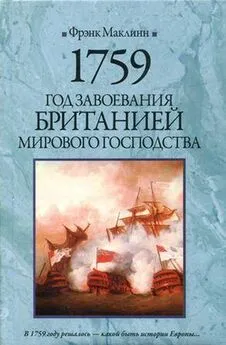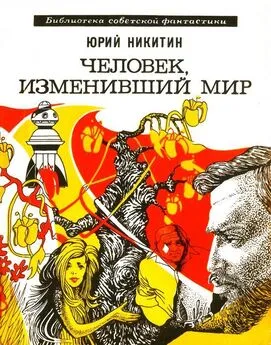Фрэнк Маклинн - Чингисхан. Человек, завоевавший мир
- Название:Чингисхан. Человек, завоевавший мир
- Автор:
- Жанр:
- Издательство:АСТ
- Год:2019
- Город:Москва
- ISBN:978-5-17-095186-4
- Рейтинг:
- Избранное:Добавить в избранное
-
Отзывы:
-
Ваша оценка:
Фрэнк Маклинн - Чингисхан. Человек, завоевавший мир краткое содержание
Чингисхан. Человек, завоевавший мир - читать онлайн бесплатно ознакомительный отрывок
Интервал:
Закладка:
Peterson, 'Old Illusions,' loc. cit. p. 224.
2032
Franke, Geschichte iv p. 290.
2033
Franke, Geschichte v p. 137; JR II p. 1139.
2034
Barfield, Perilous Frontier p. 198.
2035
Grousset, Empire p. 259.
2036
У автора — Коден . — Прим. пер .
2037
Peterson, 'Old Illusions,' loc. cit. pp. 226–230.
2038
Franke, Geschichte iv pp. 291–303, 350; d'Ohsson, Histoire II pp. 78–84.
2039
Henthorn, Korea, p. 53; Kuno, Japanese Expansion ii. pp. 387–393; Hazard, Japanese Marauders.
2040
Henthorn, Korea, pp. 61–68, 93–94; G. Ledyard, 'The Mongol Campaign in Korea and the dating of the Secret History of the Mongols,' Central Asiatic Journal 9 (1964) pp. 1–22.
2041
Yule & Cordier, Marco Polo, II. pp. 180–181.
2042
Henthorn, Korea pp. 68–75, 93–99; Louis Hambis, 'Notes sur l'histoire de Coree a l'epoque mongole,' T'oung Pao 45 (1957) рр. 151–218.
2043
Hans Sagaster, 'The History of Buddhism among the Mongols,' in Heirman & Bumbacher, Spread of Buddhism pp. 379–432; Paul Ratchnevsky, 'Die Mongolische Grosskhane und die buddhistische Kirche,' Asiatica: Festchrift F. Weller (1954) pp. 489–504.
2044
Allsen, Royal Hunt p. 23.
2045
Henthorn, Korea pp. 92–101.
2046
Allsen, Culture and Conquest p. 53; Atwood, Encyclopedia p. 319.
2047
Turrel J. Wylie, 'The First Mongol Conquest of Tibet Reinterpreted,' Harvard Journal of Asiatic Studies 37 (1977) pp. 103–133 (at pp. 103–106).
2048
Са-пан. — Прим. пер .
2049
Turrel J. Wylie, 'The First Mongol Conquest of Tibet Reinterpreted,' Harvard Journal of Asiatic Studies 37 (1977) p. 112.
2050
SHR pp. 209–213; W Abramowski, 'Die chinesischen Annalen von Ogodei und Giiyuk,' loc. cit. pp. 117–167 (at p. 152); Jackson & Morgan, Rubruck pp. 33–39. According to Yarshater, Encyclopedia Iranica viii pp. 366–367, the Eljigidei employed by Ogodei is not the same as the one employed by Genghis to execute Jamuga and the one who destroyed Herat in 1222, but this theory of 'two Eljigideis' does not command universal assent.
2051
Buell, Dictionary p. 202.
2052
Rachewiltz, In the Service pp. 95–112.
2053
Также Балджун, Балджунский договор. — Прим. пер .
2054
Paul D. Buell, 'Chinqai (1169–1252), Architect of Mongolian Empire,' in Kaplan & Whisenhunt, Opuscula Altaica pp. 168–186.
2055
Franke & Twitchett, Cambridge History p. 373; Waley, Travels of an Alchemist p. 92; Bretschneider, Mediaeval Researches I p. 70.
2056
Francis Woodman Cleaves, 'A Chancellery Practice of the Mongols in the Thirteenth and Fourteenth Centuries,' Harvard Journal of Asiatic Studies 14 (1951) pp. 493–526; Istvan Vasary, 'The Origins of the Institution of Basqaqs,' Acta Orientalia Academiae Scientiarum Hungaricae 32 (1978) pp. 201–206; Vasary, 'The Golden Horde Term Daruga and its Survival in Russia,' Acta Orientalia Academiae Scientiarum Hungaricae 30 (1976) pp. 187–196; Barthold, Turkestan pp. 468–469.
2057
Introductory remarks are found at Ratchnevsky, Genghis Khan, p. 138 and d'Ohsson, Histoire iv pp. 381–405. Deeper analysis is provided in Vasary, 'The Origin of the Institution of Basqaqs,' loc. cit. p. 323; Spuler, Mongolen in Iran pp. 40–42; Spuler, Goldene Horde p. 338; Doerfer, Turkische und mongolische Elemente iv p. 242. The institution of daruqachi was one of Genghis's innovations that survived into the Yuan empire of China. For a detailed study see Endicott-West, Mongolian Rule.
2058
For Chinqai's huge importance into the reign of Guyuk in the mid-i24os see Dawson, Mongol Mission pp. 63–67.
2059
Paul D. Buell, 'Sino-Khitan administration in Mongol Bukhara,' Journal of Asian History 13 (1979) pp. 121–151.
2060
Rachewiltz, In the Service pp. 122–128 (esp. p. 123).
2061
SHO p. 254; SHR p. 195; Spuler, Mongolen in Iran pp. 40–42; Lane, Daily Life p. 62; Christian, History of Russia I p. 415.
2062
Rachewiltz, In the Service pp. 124–125.
2063
Two studies of Yelu by Rachewiltz are fundamental: 'Yeh-lii Ch'u-ts'ai (1189–1243): Buddhist Idealist and Confueian Statesman,' in Wright & Twitchett, Confueian Personalities pp. 189–216 and the entry in In the Service, op. cit. pp. 136–175.
2064
Rachewiltz, 'Yeh-lu… Buddhist Idealist,' loc. cit. pp. 192–193; Rachewiltz, In the Service pp. 139–140.
2065
Rachewiltz, 'The Hsi-Yu-lu by Yeh-Lu Ch'u Ts'ai,' Monumenta Serica 21 (1962) pp. 1–128 (esp. pp. 17–37).
2066
Wittfogel & Feng, Liao pp. 749–751.
2067
Bretschneider, Mediaeval Researches I pp. 9–10.
2068
Rachewiltz, 'Yeh-lu… Buddhist Idealist,' loc. cit. pp. 194–195.
2069
Gumilev, Imaginary Kingdom p. 238. Some scholars have gone the other way and claim that Yelu has been vastly overrated (Buell, Dictionary pp. 287–289).
2070
Allsen, Culture and Conquest pp. 177–179; Buell, Dictionary pp. 133–134.
2071
Grousset, Empire p. 321. The 'horseback' quote is notoriously migratory, having been attributed to a number of sages during Chinese history.
2072
Честных намерений ( лат .).
2073
H. F. Schurmann, 'Mongolian tributary practices of the thirteenth century,' Harvard Journal of Asiatic Studies 19 (1956) pp. 304–389.
2074
Rachewiltz, 'Yeh-lu… Buddhist Idealist,' loc. cit. p. 202; Rachewiltz, In the Service pp. 151–152.
2075
Allsen, Imperialism pp. 144–148.
2076
Быт. 16:12.
2077
Rachewiltz, 'Yeh-lu… Buddhist Idealist,' loc. cit. pp. 212–213.
2078
Rachewiltz, In the Service p. 159; P. Ratchnevsky, 'Sigi-qutuqu,' Central Asiatic Journal 10 (1965) pp. 87–110 (at p. 87).
2079
Rachewiltz, 'Yeh-lu… Buddhist Idealist,' loc. cit. p. 202.
2080
Franke & Twitchett, Cambridge History p. 378.
2081
J. Masson Smith, 'Mongol and nomadic taxation,' Harvard Journal of Asiatic Studies 30 (1970) pp. 46–85. For the unsystematic fiscal approach of the Mongols see A. K. S. Lambton, 'Mongol fiscal administration in Persia,' Studia Islamica 44 (1986) pp. 79–99; 45 (1987) pp. 97–123.
2082
Morgan, Mongols pp. 100–103.
2083
Kwanten, Imperial Nomads pp. 128–129.
2084
d'Ohsson, Histoire II p. 63.
2085
Some of the administrative implications of this are teased out in F. W Cleaves, 'A Chancellery Practice of the Mongols in the Thirteenth and Fourteenth Centuries,' loc. cit. pp. 493–526.
2086
Rachewiltz, 'Yeh-lu… Buddhist Idealist,' loc. cit. p. 205.
2087
Rachewiltz, In the Service pp. 60–69.
2088
Farquhar, Government of China p. 45; Gernet, Daily Life p. 65; Fairbank & Goldman, China pp. 95–107; Elman, Civil Examinations.
2089
Makino Shuji, 'Transformation of the Shih-jen in the late Chin and early Yuan,' Acta Asiatica 45 (1983) pp. 1–26.
2090
Ch'i-ch'ing Hsiao, 'Yen Shih, 1182–1240,' Papers on Far Eastern History 33 (1986) pp. 113–128 (at pp. 119–122).
2091
Rachewiltz, 'Yeh-lu… Buddhist Idealist,' loc. cit. p. 202; Rachewiltz, In the Service p. 151.
2092
Rachewiltz, 'Yeh-lu… Buddhist Idealist,' loc. cit. p. 202; Rachewiltz, In the Service p. 165.
2093
Franke & Twichett, Cambridge History p. 377.
2094
On this subject in general and its implications see Nikolay N. Kradin, 'Nomadic Empires: Origin, Rise and Decline,' in Kradin et al, Nomadic Pathways pp. 73–87; Kradin, 'Nomadism, Evolution and World Systems: Pastoral Societies and Theories of Historical Development,' Journal of World-Systems Research 8 (2002) pp. 363–388.
2095
Franke & Twitchett, Cambridge History p. 377.
2096
Thomas T. Allsen, 'Sharing out the Empire: Apportioning Lands under the Empire,' in Khazanov & Wink, Nomads and the Sedentary World pp. 172–190.
2097
Jackson, Mongols and the West p. 291.
2098
JB I pp. 209–210, 213–215.
2099
Rachewiltz In the Service p. 160.
2100
Rachewiltz In the Service p. 160.
2101
Franke & Twitchett, Cambridge History p. 377.
2102
Abel-Remusat, Nouveaux melanges II pp. 64–68.
2103
For Shih-mo Hsien-te-pu see Rachewiltz, In the Service pp. 147–148, 160; Waley, Travels of an Alchemist p. 53. For Buyruq Qaya (1197–1265) see In the Service pp. 480–481; Buell, Dictionary p. 128; Buell, A-Z of the Mongol Empire p. 40.
2104
Rachewiltz, In the Service p. 165.
2105
For the latter phase of Yelu's relationship with Ogodei see Bretschneider, Mediaeval Researches I pp. 12–24; Tanner, China: A History I pp. 239–280.
2106
Franke & Twitchett, Cambridge History p. 378.
2107
Franke & Twitchett, Cambridge History p. 380.
2108
Rachewiltz, 'Yeh-lu… Buddhist Idealist,' loc. cit. p. 208.
2109
Rachewiltz, 'Yeh-lu… Buddhist Idealist,' loc. cit. p. 208.
2110
В российской историографии второй сын Угэдэя — Годан, Кодан, Кудэн. — Прим. пер .
2111
Rachewiltz, 'Yeh-lu… Buddhist Idealist,' loc. cit. p. 215; Rachewiltz, In the Service pp. 105–106, 125.
2112
Michael Weiers, Geschichte der Mongolen p. 76.
2113
Gregory G. Guzman, 'European Captives and Craftsmen among the Mongols, 1231–1255,' The Historian 72 (2010) pp. 122–150.
Читать дальшеИнтервал:
Закладка:



![Ксения Чепикова - Человек, научивший мир читать [История Великой информационной революции]](/books/1059757/kseniya-chepikova-chelovek-nauchivshij-mir-chitat-ist.webp)



